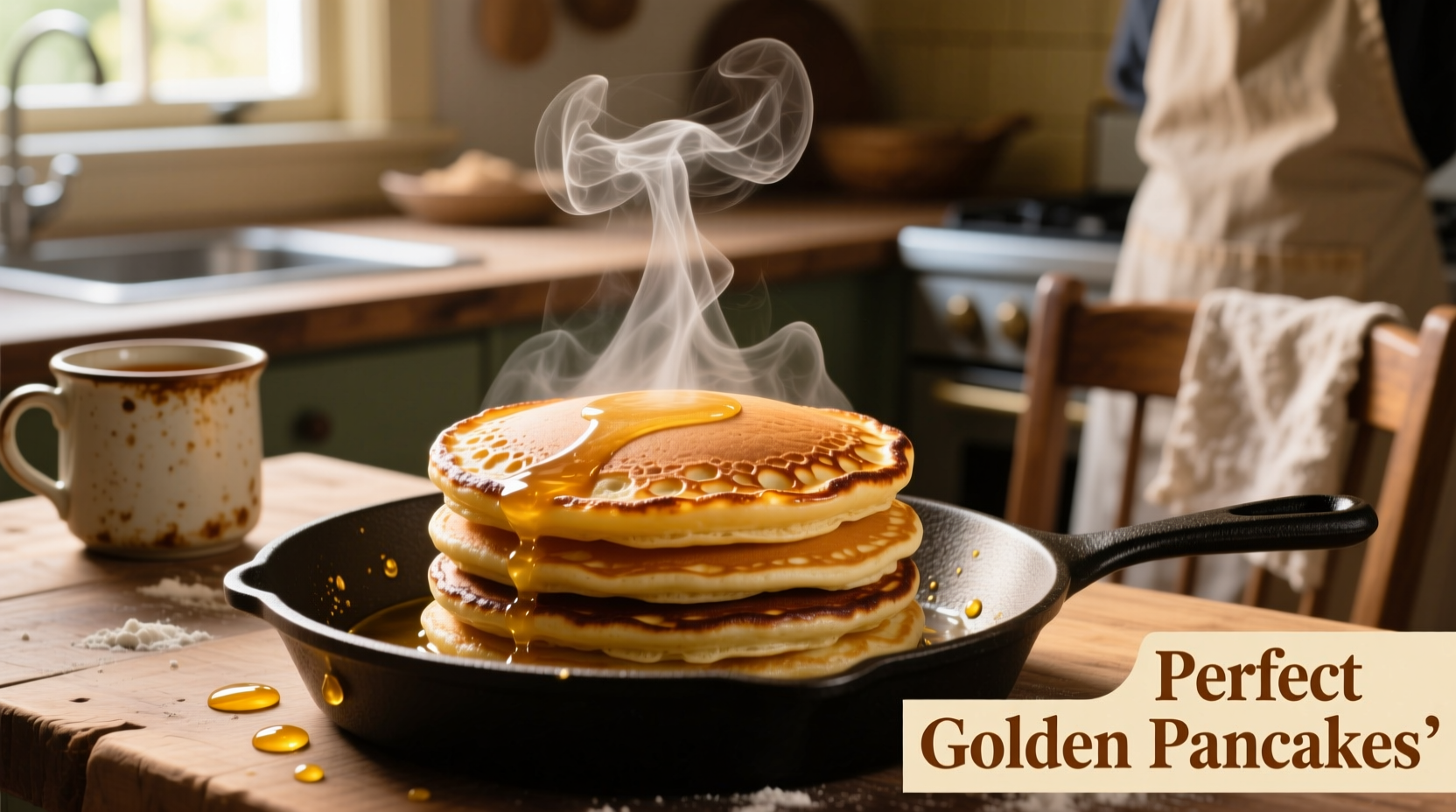The Science Behind Perfect Pancakes
Understanding the chemistry transforms pancake making from hit-or-miss to reliable success. When flour meets liquid, gluten development begins—too much creates tough pancakes, too little yields flat results. The ideal window is 10-15 minutes after mixing, allowing bubbles to form while preventing overdevelopment. Baking powder reacts in two phases: first when wet ingredients combine, then again when heat activates the second rise. This dual-action creates that signature airy interior. The Maillard reaction—occurring between 285°-325°F—creates the golden crust without burning.
| Flour Type | Protein Content | Texture Result | Best For |
|---|---|---|---|
| All-Purpose | 10-12% | Balanced rise & tenderness | Classic fluffy pancakes |
| Cake Flour | 6-8% | Extremely tender | Dessert-style pancakes |
| Bread Flour | 12-14% | Dense, chewy | Avoid for pancakes |
According to USDA Food Safety and Inspection Service guidelines, cooked pancakes should reach an internal temperature of 160°F to ensure food safety while maintaining optimal texture (USDA FSIS).
Your Essential Pancake Toolkit
Professional results require proper equipment. A 10-12 inch cast iron or nonstick griddle provides even heating critical for consistent browning. Digital thermometers eliminate guesswork—maintain 375°F for optimal rise without burning. Use a 1/4 cup dry measuring cup for uniform portioning—this creates pancakes that cook through before edges over-brown. Whisk dry ingredients in a wide bowl to prevent tunneling; use a rubber spatula for gentle folding that maintains air pockets.

Step-by-Step Perfect Pancake Method
Prepare Your Batter Correctly
Combine 1 1/2 cups all-purpose flour, 3 1/2 teaspoons baking powder, 1 tablespoon sugar, and 1/2 teaspoon salt. Whisk 1 1/4 cups buttermilk, 1 large egg, and 3 tablespoons melted butter separately. Create a well in dry ingredients, pour wet mixture in, and fold until just combined—small lumps are acceptable. Let batter rest 12 minutes. This critical step allows flour to hydrate fully while baking powder activates gradually.
Master the Cooking Process
Preheat your griddle to 375°F (use the water droplet test: beads should dance, not sizzle violently). Lightly grease surface with neutral oil. Pour 1/4 cup batter per pancake, spacing 2 inches apart. Wait until bubbles form across the entire surface and edges look set (about 2 minutes), then flip. Cook second side 1-2 minutes until golden. Keep cooked pancakes warm in a 200°F oven on a wire rack—stacking causes steaming and sogginess.
| Problem | Most Likely Cause | Solution |
|---|---|---|
| Flat pancakes | Expired baking powder | Test by mixing 1 tsp with hot water—should bubble vigorously |
| Burnt edges | Temperature too high | Reduce heat by 25°F increments |
| Tough texture | Overmixed batter | Fold ingredients gently until just combined |
Contextual Cooking Adjustments
Environmental factors significantly impact results. At high altitudes (above 3,000 feet), reduce baking powder by 1/8 teaspoon and increase liquid by 2 tablespoons per cup—USDA agricultural research confirms this adjustment compensates for lower atmospheric pressure (USDA Agricultural Research Service). Humidity above 60% requires reducing liquid by 1-2 tablespoons; flour absorbs more moisture in dry conditions. Cast iron retains heat better than electric griddles—reduce initial temperature by 25°F when using seasoned cast iron.
Consumer Reports' 2024 breakfast survey revealed the top three pancake frustrations: inconsistent browning (68%), flat texture (52%), and sticking to the pan (47%). Understanding these context boundaries prevents these common issues.
Perfect Pancake Variations
Add 1/2 cup blueberries after pouring batter onto griddle—adding them to the bowl causes uneven distribution. For chocolate chip pancakes, press chips into the top immediately after pouring. Gluten-free version: substitute 1 1/4 cups gluten-free flour blend plus 1/2 teaspoon xanthan gum. Vegan alternative: replace egg with 1/4 cup applesauce and buttermilk with almond milk plus 1 tablespoon vinegar.
Proven Serving and Storage Techniques
Rest pancakes 2 minutes before serving—this allows internal structure to set. Serve with real maple syrup warmed to 120°F (optimal viscosity for coating). Store leftovers in airtight container with parchment between layers. Reheat in toaster oven at 300°F for 3-4 minutes—microwaving creates rubbery texture. Freeze uncooked batter in 1/4 cup portions for up to 3 months; thaw overnight in refrigerator before cooking.











 浙公网安备
33010002000092号
浙公网安备
33010002000092号 浙B2-20120091-4
浙B2-20120091-4